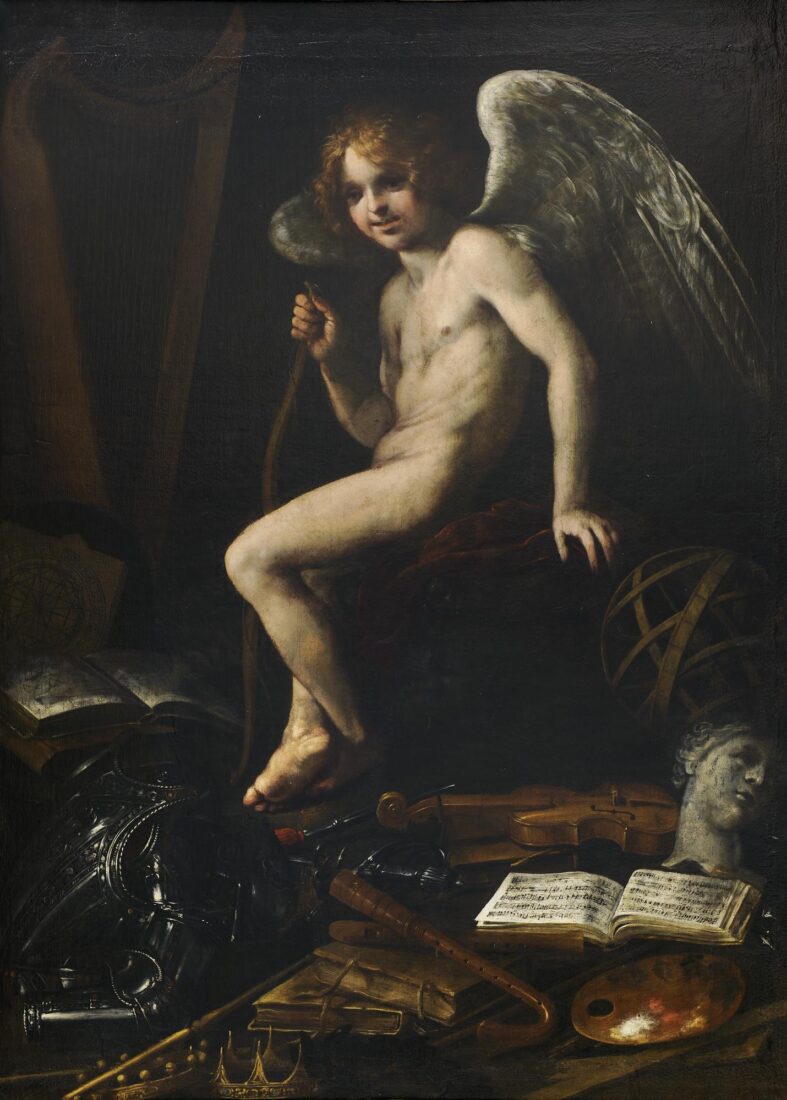We use cookies to make our site work properly, to personalize content and ads, to provide social media features and to analyze our traffic. We also share information about how you use our site with our social media, advertising and analytics partners. Read the Cookies Policy.

Petrazzi Astolfo (1580 - 1653)
Eros Triumphant, ca. 1620 - 1630
Oil on canvas, 163 x 120 cm
Stefanos Skouloudis Bequest
The painting illustrates an excerpt from Virgil’s Idylls (X. 69) which lauds the invincible power of Love (Eros): “Amor vincit omnia et nos cedamus amori”. The painter had recourse to the figure of a winged youth, holding a bow in his hand, the characteristic symbol of Eros (Cupid). The apparent indigence of the young man, who is presented naked and who is turned facing the viewer with his melancholic and, at the same time, sarcastic gaze, is in stark contrast to the wealth of objects that surround him: an enormous harp, the carved suit of armor, the books and musical instruments, the astrolabe, the sculpted head and a painter’s palette; all objects which signify worldly satisfaction and human knowledge which Eros disdains and enslaves with his passion. This type of allegorical presentation, the ambiguity of which is one of its most charming features, was in great demand by aristocrats and the more exalted prelates of the Roman Catholic Church at the beginning of the 17th century. Eros Triumphant, done by Caravaggio for the Marquis Vincenzo Giustiniani in Rome in 1601-1602 (Berlin, Germaldegalerie), not only made an enormous impression of the art lovers of the time but also gave rise to a frenetic competition between the imitators and the adversaries of the Lombard painter Giovanni Baglione who, in 1603, took Caravaggio to court and several of his friends, and who painted for Cardinal Benedetto Guistiniani, brother of Vincenzo, two versions, moralistic in character, of the same subject, Eros Triumphant, incorporating the figures of Celestial and Terrestrial Eros (1602, Berlin, Germaldegalerie and Galerie Nationale di Palazzo Barberini, Rome).
Several years later depictions of Eros triumphant made their way to the forefront again as they were sought after by Tuscan collectors. The composition of the work at the National Gallery has many points in common with the Caravaggian model, the main difference being that the youth is staring straight ahead and the rendering is more restrained. The stylistic perception governing the work is related to that of Florentine painting from 1620-1630.

